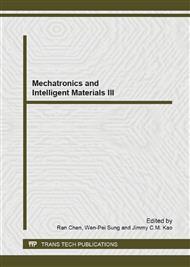p.1401
p.1405
p.1409
p.1413
p.1418
p.1423
p.1428
p.1433
p.1437
Magnetic Spring and Experimental Research on its Stiffness Properties
Abstract:
Structure of one hybrid mono-directional magnetic spring was presented. Based on the experiment rig of magnetic spring the stiffness properties and its influencing factors were experimentally studied and analyzed. Research results show that the stiffness of the hybrid magnetic spring composed of the electromagnet and the permanent magnets is adjustable and controllable. As a whole the axial magnetic force of the magnetic spring increases non-linearly with the air gap between magnets decreasing, but within small air gap when there is considerable difference in magnetic flux density between the two magnets the axial magnetic force will decrease with the air gap decreasing, namely the magnetic spring behaves negative stiffness characteristics. The axial magnetic force is decided by the magnet with less magnetic field energy. And the adjusting range of axial magnetic force depends on the two magnets dimensions, their surface magnetic flux density and the magnetic saturation degree of the electromagnet. Furthermore, under same air gap the axial magnetic force of the magnetic spring increases linearly with the excitation coil voltage increasing.
Info:
Periodical:
Pages:
1418-1422
Citation:
Online since:
June 2013
Authors:
Price:
Сopyright:
© 2013 Trans Tech Publications Ltd. All Rights Reserved
Share:
Citation:


